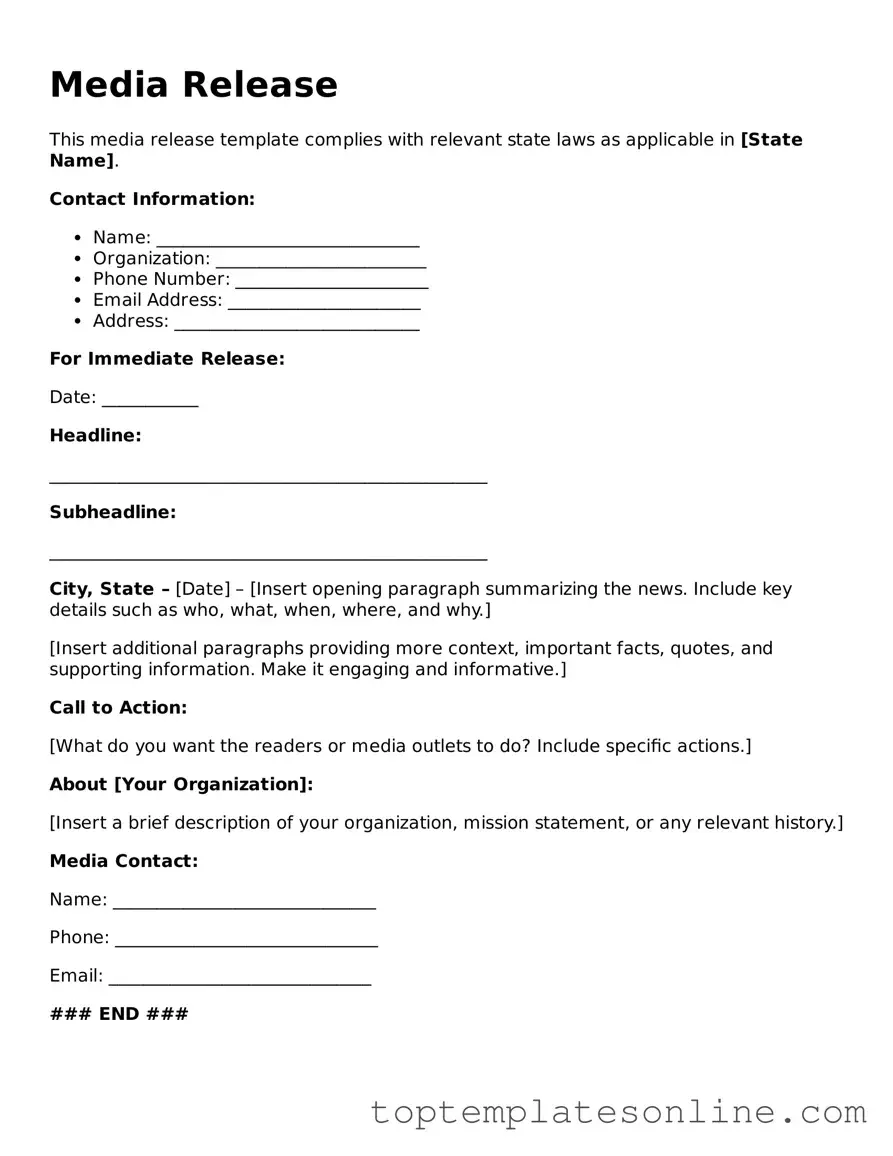Attorney-Approved Media Release Form
The Media Release form is a legal document that grants permission for the use of an individual's likeness, voice, or other personal attributes in various media formats. This form is crucial for protecting both the rights of the individual and the interests of the media organization. Understanding its importance can help ensure that all parties involved are clear about how the media will use the shared content.
Customize Media Release Here
